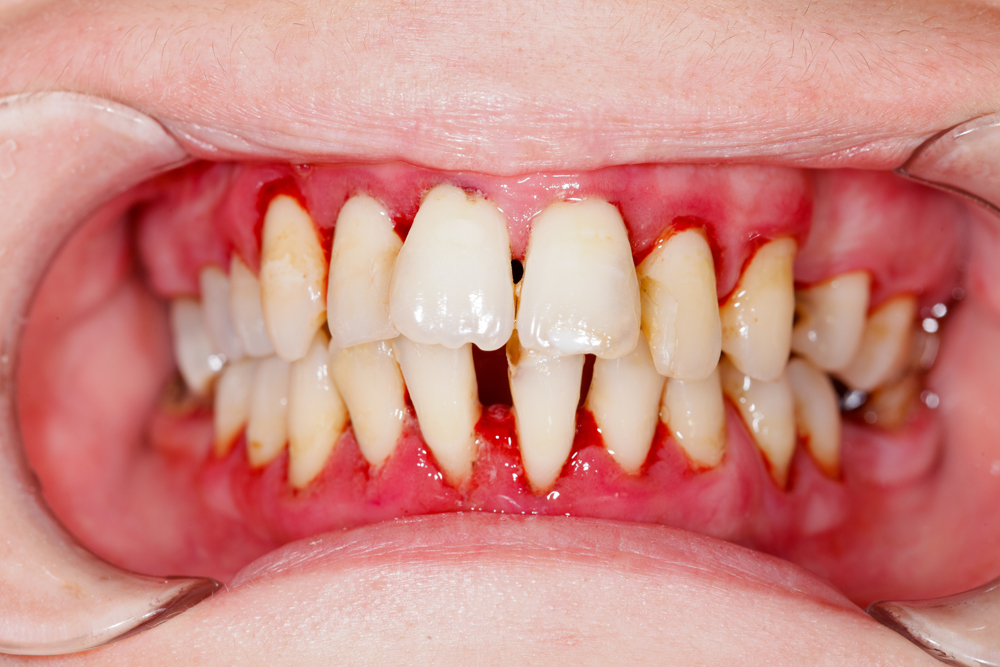What Do Periodontists Do?

Periodontists are essentially “advanced dentists” who specialize in the diagnosis, prevention, and care of periodontal disease. Generally speaking, periodontal disease describes infections of the structures around and below the teeth. Examples include the gums, the cementum of the teeth’s roots, periodontal ligament, and the alveolar bone. Periodontists also specialize in advanced tooth and gum care such as treating gum disease, placing oral implants, and treating oral inflammation.
As specialists, periodontists are dentists who have undergone several years of additional training beyond what’s required of a typical general dentist. This training and added experience allows periodontists to practice a more specialized oral care approach. In a typical situation, a dentist will refer a patient to a periodontist when the oral health of a patient is compromised beyond the level of care the dentist is capable of providing.
Among a myriad of specialized skills acquired by a dentist who becomes a periodontist are examples such as performing gum/jaw surgery, placement of implants, and invasive treatment of diseased gums. Giving credit where it’s due, consider this: American dental schools require applicants to already possess a bachelor’s degree. Typically, a bachelor’s degree takes four years to acquire. Building on a bachelor’s degree, a doctorates degree in dentistry requires four more years to acquire. So, presumably, your dentist is involved in higher education for at least eight years before being licensed to practice dentistry on a patient. Periodontists have two to four more years of education beyond the eight years required to be a dentist. This is over a decade of college education in lectures, laboratories, and practical experience that produces skilled periodontists. Rightfully so, as these men and women can perform surgical procedures and are consulted by dentists for advanced care.
What Is Surgical Periodontics?
 Some periodontal procedures are noninvasive and mitigate disease through pharmacological medications and patient education. On the other hand, a variety of periodontal procedures are heavily invasive and constitute oral surgery. By invasive (medically speaking), we’re talking about procedures where skin/mucus membranes (gums) are surgically entered by puncture or incision. For example, to access a tooth’s root structure or bone structures within the gums, the gum tissue has to be broken and entered. Bacteria and tartar can (and do) present well below the gum line where routine oral health interventions fail to address the problem. The area below the gum line is called the subgingival area and is a very familiar landscape to periodontists, as this is their ‘playground’. An example of a surgical periodontal procedure would be a root surface debridement. This is a procedure where the gum structure is entered to where a tooth’s root can be accessed. Upon accessing the root structure, dead/damaged tissues are removed and the surgical site is cleaned and closed.
Some periodontal procedures are noninvasive and mitigate disease through pharmacological medications and patient education. On the other hand, a variety of periodontal procedures are heavily invasive and constitute oral surgery. By invasive (medically speaking), we’re talking about procedures where skin/mucus membranes (gums) are surgically entered by puncture or incision. For example, to access a tooth’s root structure or bone structures within the gums, the gum tissue has to be broken and entered. Bacteria and tartar can (and do) present well below the gum line where routine oral health interventions fail to address the problem. The area below the gum line is called the subgingival area and is a very familiar landscape to periodontists, as this is their ‘playground’. An example of a surgical periodontal procedure would be a root surface debridement. This is a procedure where the gum structure is entered to where a tooth’s root can be accessed. Upon accessing the root structure, dead/damaged tissues are removed and the surgical site is cleaned and closed.
Surgical periodontics are also applied to cosmetic procedures as well. An example of a cosmetic periodontal procedure would be a case where gum tissue is reduced to expose more tooth. Procedures like this are often elected by people whose gums appear more prominent than their teeth when smiling. Periodontists are also consulted to work on or alongside surgeons to repair damages occured from a maxillofacial traumas. A common cosmetic procedure performed by periodontists is the replacement of missing teeth with dental implants. Periodontists are experts at restoring order to disorderly gums and smiles.
What Is The Difference Between Periodontists And Endodontists?
Periodontists also interact with endodontists within their line of work. Often both periodontists and endodontists are mistaken for one another or the nature of their specialties misunderstood. Like periodontists, endodontists are dental specialists. Endodontists also undergo two to four years education on top of their dentistry degree to specialize in endodontics. General dentistry addresses and mitigates problems with the tooth and tooth structure. Endodontics address the tooth’s inner tissues/structure (pulp) and down through the tooth’s roots. As an example, endodontists are consulted when a patient presents with abnormal root structures or problems deep within a tooth. Being experts of the inner tooth, endodontists also commonly specialize and excel in root canal procedures. Periodontists differ from dentists by specializing in the tissue/structures around and beneath the teeth. So from the outside in, dentists specialize in tooth care, endodontists specialize in inner-tooth interventions, and periodontists specialize in deep tissue (gum, ligament, and bone structure) interventions.
